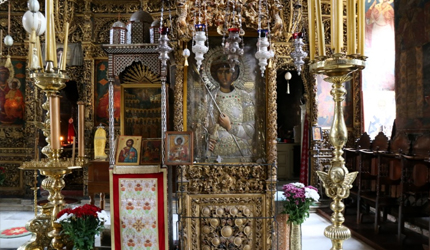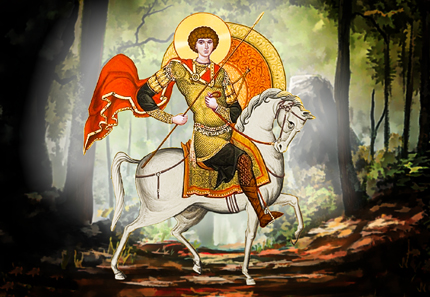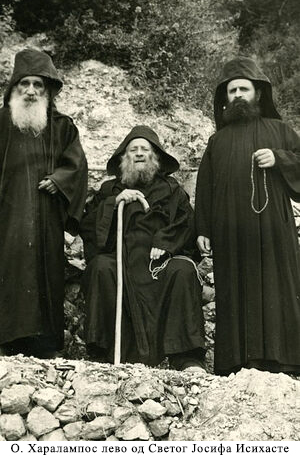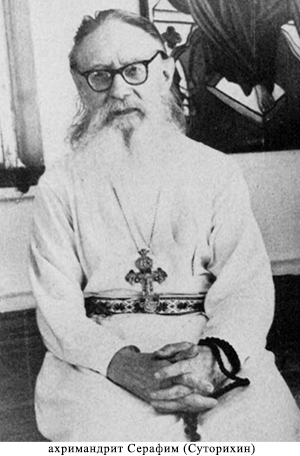By what epithets does the Orthodox Church not glorify the holy great martyr George? “The greatest of the great martyrs”, “known everywhere for miracles”, “rush to the rescue”, etc. These sublime names testify to the countless miracles that have happened and are happening throughout Christendom thanks to the intercession of St. George. Below we offer a small collection of such miracles that have happened in the relatively recent past in different parts of the world.
A Novice
If the Mount Athos is considered the garden of the Most Holy Mother of God, then St. George is called the guardian of this garden. The cathedral churches of the Zograf and Xenophon monasteries are dedicated to St. George, and numerous chapels and small monastic buildings are scattered on Athos – catechisms and cells, named after the Holy Victor.

One of these cells, whose wealth was talked about and in which two old monks prayed, was under the jurisdiction of the monastery of Pantocrator.
One night, strangers knocked on a cell. A voice inside asked who was there and what they wanted at night. The visitors replied that they were pilgrims and were looking for accommodation. The door was opened by a young novice. In front of him were three men who wanted to see the elders. The novice took them to the guest room and asked them to wait.
Strangers sat and waited. There was a dead silence in the cell. The whole two hours passed in heavy waiting. Then they wanted to get up from their seats, but without success: someone tied their arms and legs with invisible shackles. Screams were heard in the cell. The monks woke up and ran in horror to the guest room, where they saw strangers screaming wildly.
– Who are you? What do you need? How did you get inside? – The monks asked in doubt.
“Your young novice let us in!”
– But we have no novices here!
At that time, the “pilgrims” were forced to discover the truth: it turns out that one of them was the famous bandit Stamatis, who plundered the entire peninsula of Halkidiki and Athos. Together with two friends, Stamatis decided to rob their cell, because he knew that two helpless old monks lived there. Pretending to be pilgrims, they wanted to enter the cell, kill the elders and commit a robbery. And everything would have gone according to plan, if it weren’t for this novice! Who was that “novice”?
The monks realized that a miracle had happened. They ran to the temple and brought the icon of St. George to the robbers. The robbers were horrified when they saw the “novice” depicted on the icon. Yes, he opened the door for them! When they tried to kneel in front of the icon, the invisible ties were broken.
Since then, the cell has been called the cell of St. George the Manifested (Faneromenu), and the icon is kept today in the cathedral of the Pantokrator monastery. The miracle left such an impression on Stamatis that he left his disastrous occupation and, as the first to settle in the most deserted part of Athos – Karulja, built himself a hut with a church in the name of St. George.
Forest Guard

In western Armenia (now in Turkey), in the area of Akn, there was the village of Vank, whose inhabitants, mostly Orthodox Armenians, have long considered St. George as their patron saint. The old village temple was located in the woods, on the banks of the biblical river Euphrates. As a church territory, this forest was considered a reserve of St. George.
One day, a Turk, neglecting the shrine of St. George, went to the forest to get firewood. After cutting down the wood and loading the firewood, he went home satisfied with the work done, when he suddenly saw a rider on a gray horse and in a scarlet cloak in front of him. The horseman drew his sword and, holding it over the head of the blasphemer, threatened:
“The next time you go into the woods to cut down trees, I’ll cut you down!” If you want, you can cut the dried ones, but don’t dare to put your hands on the green trees!
After that, the Turk ran to the village in horror, telling the Christians about the miracle and urging everyone to stay away from the forest. However, not everyone believed him. So one Turkish woman somehow entered the same forest and cut down a half-dried tree. When the tree fell, the woman approached him, but touching the tree, she remained motionless. In front of her stood the one who tied her with invisible ties – St. George on horseback. The Turkish woman remained in this position all day, screaming and asking for help. Only in the evening, her little son, frightened by his mother’s long absence, went into the woods in search and found her in a miserable condition. Sobbing, the mother told her son what had happened and promised never to enter the forest again, which is sacred to Christians. As soon as she said the promise out loud, the invisible chains fell off and she managed to straighten up.
Late for the Liturgy
Around 1903, the Orthodox Arab Khalil Abufarha, the head of the cave temple in the Syrian village of Betshahur, went to the church to light a lamp and prepare the temple for the morning. As he approached the church, he heard unfamiliar voices: to his surprise, there was already a service in the church. What was his astonishment when, entering inside, he became an eyewitness to the Divine Liturgy performed by the angelic Forces and the Most Holy Mother of God herself! Khalil froze in immobility. Suddenly there was a thud of horses outside, and a young warrior entered the cave. Entering the temple, he hurried to the Most Holy.
“Where have you been, Georgije?” She asked loudly, “why are you late?”
“Mother of God, Mother of God, the boat sank on the high seas, and I ran to save the people who called me for help.
Having said that, St. George took off his wet cloak, spraying Halil’s face and clothes. At the end of the liturgy, Khalil was honored to receive the holy bread from the hands of the Immaculate Virgin. After this, Khalil was left alone in the church. Somewhat later, when the priest and the parishioners entered the temple, they found Halil, still wet and who was carefully holding a piece of holy bread received from the Most Holy Mother of God in his palm.
Salvation from the death penalty
One of the students and collaborators of the recently celebrated Saint Joseph Hesychast (1897–1959) was Father Haralampos (Galanopoulos, 1910–2001), abbot of the Athos monastery of Saint Dionysius. A Pontic Greek by birth, he was born in 1910 in Russia and as a ten-year-old boy he moved with his family to Greece, where he settled in northern Greece, in the village of Arcadico.
In 1941, during the German occupation of Hellas, Bulgarian soldiers arrested Haralampius and his countrymen and threw him behind bars. A week later, something happened that no one expected: the prisoners were sentenced to death. Haralampius knelt with hot tears and prayed:
– Holy Great Martyr George, great warrior of Christ, save us, and I promise that I will dedicate my life completely to God!
“As soon as I finished praying,” the elder said later, I heard a noise above us. The horse galloped in the air above us, but I did not see the rider. But everything was clear! It must be St. George, I say, I’m just not worthy to see him. Even if I only see a horse, it means he heard us!
Early in the morning, the executioners entered the cell, ready to execute the sentence. A few seconds later, the cell door opened wide, and a young athletic man entered the cell, shouting angrily:
– Stop now, villains! Leave the innocent in their homes! Otherwise I’ll kill you all!

The executioners, terrified, immediately left the cell. The young man also disappeared with them. No one doubted, of course, that it was the great martyr of George himself. After a short time, the prisoners were amnestied.
Nine years after this miracle, Haralampos Galanopoulos left the world and, coming to the Holy Mountain, received monasticism, fulfilling his vow to God and St. George.
Opening of the Temple
In the time of Khrushchev, the exiled Archimandrite Seraphim (Sutorikhin, 1901–1979) served in the Samarkand Church of the Holy Great Martyr George the Victorious. Father Seraphim, already old and weak, became a beacon for many believers, especially the young. Authorities could not forgive him for such activities. With the help of provocateurs from the KGB, they ensured that the church of St. George was closed, and they had to serve secretly, under cover of night. So two years passed and, finally, it was decided to turn the temple into a kindergarten.

One day, two riders in an unusual old officer’s uniform rode into the churchyard. One of them got off his horse, went to Father Seraphim’s cell and ordered:
– Father Seraphim, get ready for the service: the church will be open today!
Then both soldiers went to the executive committee. The terrible officer, passing by the police and the guards, without asking anyone for anything, opened the door of the office of the President of the Executive Board.
– The Church of the Great Martyr George will be opened today! Otherwise, you will be punished without mercy! – the order sounded.
The soldier went the same way he appeared, and the president, in some incomprehensible horror, called the commissioner for religious affairs:
– Urgently send a messenger to the Church of the Great Martyr George! Let the temple open immediately!
The temple was really opened on the same day – on the eve of May 6, the baptismal feast. At the same time, the president of the executive board came to Father Seraphim, asking him to tell him the name of his church leader. Father Seraphim showed a photograph of the Tashkent bishop.
“No, not this one,” the official said. Do you have anyone above? He was one of the high-ranking officers with me … he ordered the temple to be opened urgently: “Otherwise, he says, you will be punished without pardon!” Obviously, some boss …
Father Seraphim then brought him the icon of St. George with tears. The chairman, like the former Athos bandits, was appalled:
– He !!! It was him yesterday!
Source: pravoslavie.ru

